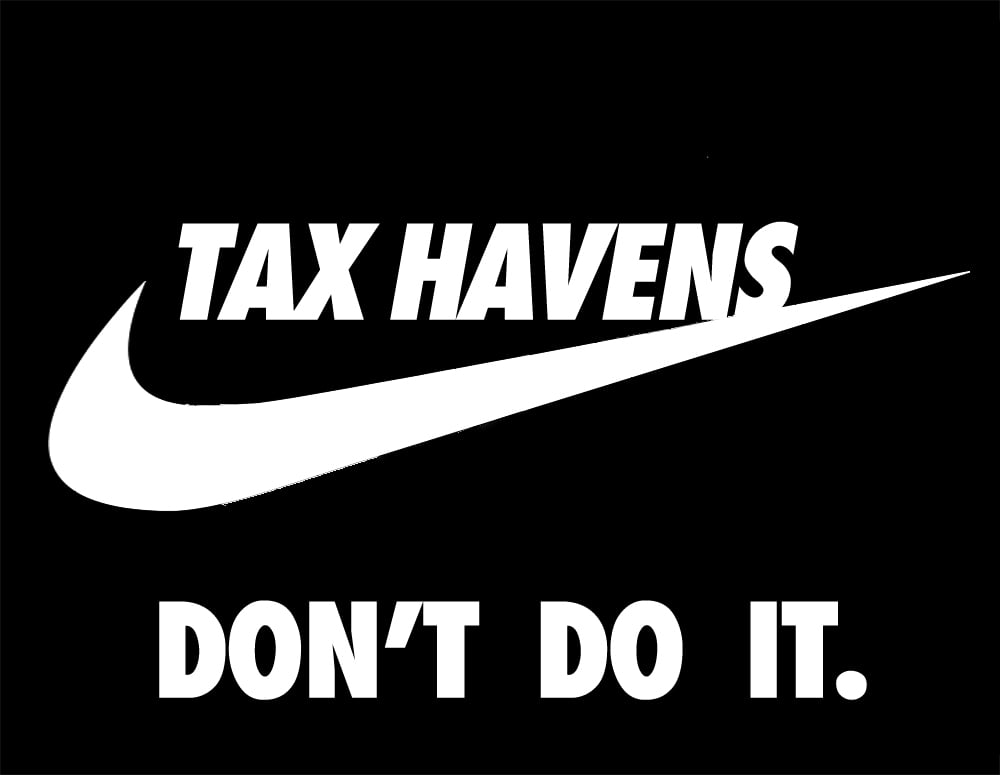Offshore tax haven abuse
Nike earned more than $10 billion in U.S. profits from 2008 to 2015 but only paid 18.6 percent in U.S. federal taxes during this time.[1] This is just over half of the official U.S. corporate tax rate of 35 percent.
One way Nike manages this low U.S. tax rate is by shifting large portions of its domestic profits into offshore tax havens. As of 2016, Nike had $12.2 billion in offshore profits, on which it would owe $4.1 billion in taxes should it repatriate those profits.[2] Corporations get a credit for foreign taxes paid. To calculate U.S. taxes owed on offshore profits, we subtract the percentage of foreign tax paid on offshore profits from the 35 percent U.S. statutory rate. The $4.1 billion Nike would owe on its $12.2 billion in offshore profits translates to a U.S. tax rate of 33.6% — meaning it has only paid foreign taxes on these profits at a rate of 1.4%. This strongly suggests that most of this money is booked in offshore tax havens with either zero or single-digit corporate tax rates. A repatriation tax rate of 12 percent, as proposed by the GOP, would generate at least $2.7 billion in tax savings for Nike.
In fact, Nike reports having 54 subsidiaries in places that are widely considered to be tax havens.[3] For instance, in past years, the company reported about a dozen subsidiaries in Bermuda[4], a tax-free British territory, even though it does not operate any stores in Bermuda. It is likely that instead, these subsidiaries were set up to house Nike’s trademarks so that the U.S. parent company can then pay royalties to those subsidiaries (which will not be taxed in Bermuda) and subtract these payments from its own U.S. tax bill as business expenses.
Other loopholes
Of course using offshore tax havens to shield profits from federal taxes is just one example of how Nike was able to pay barely more than half the statutory corporate tax rate over an eight-year period. The company avoided an additional $965 million in U.S. federal and state taxes between 2008 and 2015 using a loophole known as the “stock option loophole.”[5] Nike and other big corporations often compensate their executives with stock options (options to purchase shares of company stock at a discounted rate). When those options are exercised, the company is allowed to deduct from its taxable income the difference between the value of the shares and what the employee pays for the stock, even though the company doesn’t have to spend anything to issue the stock option. This means that American taxpayers are subsidizing the outsized compensation packages for Nike’s top executives.
[1] Institute on Taxation and Economic Policy (ITEP), “The 35 Percent Corporate Tax Myth” (March 2017), p. 38. https://itep.sfo2.digitaloceanspaces.com/35percentfullreport.pdf
[2] ITEP, “Offshore Shell Games 2017” (October 2017), p. 2-3. https://itep.sfo2.digitaloceanspaces.com/offshoreshellgames2017.pdf
[3] Ibid., p. 15.
[4] ITEP, “Tax Avoidance: Nike “Just Did It” Again, Moving $1.5 Billion Offshore Last Year” (July 21, 2017). https://itep.org/tax-avoidance-nike-just-did-it-again-moving-1-5-billion-offshore-last-year/
[5] ITEP, “35 Percent,” p. 66.





